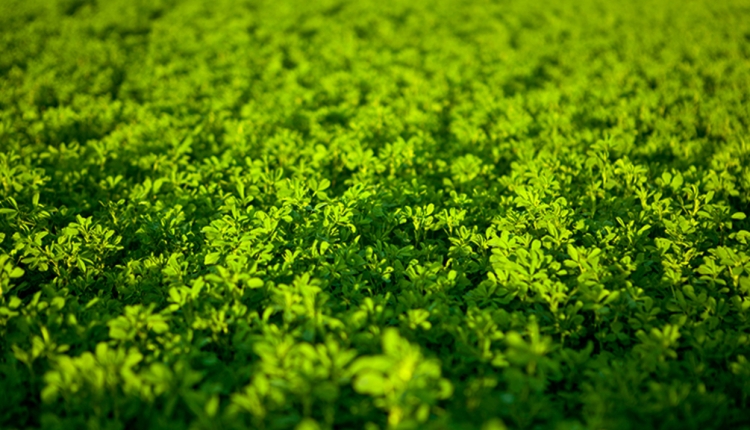Limiting the Alfalfa Weevil’s Damage to First Cutting |
|
|
Sponsored content created and provided by FMC Alfalfa Alfalfa weevil is “enemy number one” for Midwest alfalfa. Its lifecycle, as its namesake suggests, depends on the alfalfa plant. But while the name “weevil” may send you looking for horned insects in your hayfields, it’s the weevil’s larvae that cause the most destruction. This challenging pest can make a dent in yields quickly and challenge regrowth for the next cutting. First cutting alfalfa is most susceptible to alfalfa weevil larvae damage. These larvae emerge in the spring, typically between February and April. Larvae can be identified by their lime green color and white stripe down the back. Once emerged, they begin feeding on young alfalfa plants. Feeding can be identified by small pin holes in alfalfa leaves. These small pin holes in leaves can quickly progress into the “skeletonization” of plants as larvae grow and consume more (figure 1). The dried, dead plant material can appear as a whiteish cast in an alfalfa field.  Figure 1. Leaf destruction by the alfalfa weevil removes valuable nutrition from the forage. Leaves contain two to four times more crude protein than stems, according to Hay and Forage Grower. That, along with less than one-third of the fiber and twice as much nonfibrous carbohydrate. Early cutting of alfalfa is one way to limit the damage of the alfalfa weevil but doesn’t eliminate it. The pest can also damage some early second cutting regrowth. These valuable first and second cuttings warrant careful monitoring for this costly pest. Beyond early cutting, growers should work with their crop advisor to determine an appropriate economic threshold for spraying to control the alfalfa weevil. Many recommend an application when one or two larvae per two to three stems are found. Insecticides labeled to control alfalfa weevil are more limited in recent years. Steward® EC insecticide from FMC is one of the options available to alfalfa growers. Steward EC insecticide acts fast to kill larvae with up to 14 days of residual control. It also has a short preharvest interval of seven days. Moreover, its single active ingredient is an excellent fit into integrated pest management (IPM) programs. Alfalfa leaves are a precious source of nutrition in hay. Break the cycle of the alfalfa weevil by identifying and controlling its damage next season. Control these pests with a flexible option like Steward EC insecticide that also offers extended residual control. Fewer larvae can help preserve yield during first cutting and protect early regrowth for second cutting. The EPA label for Steward EC contains the following statements: This product is highly toxic to bees exposed to direct treatment on blooming crops or weeds. Do not apply this product or allow it to drift to blooming crops or weeds if bees are foraging the treatment area. Always read and follow all label directions, precautions, and restrictions for use. FMC, the FMC logo and Steward are trademarks of FMC Corporation or an affiliate. ©2023 FMC Corporation. All rights reserved. 22-FMC-2523 01/23 |
